Even though they usually require more coat maintenance, you can’t help but adore the look of a cute, huggable, fluffy dog. But, of course, you’d prefer that your fuzzy four-legged friend not be a heavy shedder, so you don’t have to follow them around with a vacuum cleaner.
Which dog breeds are both fluffy and low-shedding?
Here’s the list:
- Lakeland Terrier
- Brussels Griffon Dog
- Affenpinscher
- Cairn Terrier
- Maltese
- Norwich Terrier
- Bichon Frise
- Scottish Terrier
- Poodle
- Portuguese Water Dog
- Tibetan Mastiff
- Irish Water Spaniel
- Norfolk Terrier
- Bolognese Dog
- Shih-Tzu
- Soft-Coated Wheaten Terrier
- Tibetan Terrier
- Black Russian Terrier
This article will discuss the coat texture and length for each of these 18 fuzzy dogs. In addition, you’ll learn some grooming tips as well as more information about how little each breed sheds.
So with that being said, let’s get started!
1. Lakeland Terrier
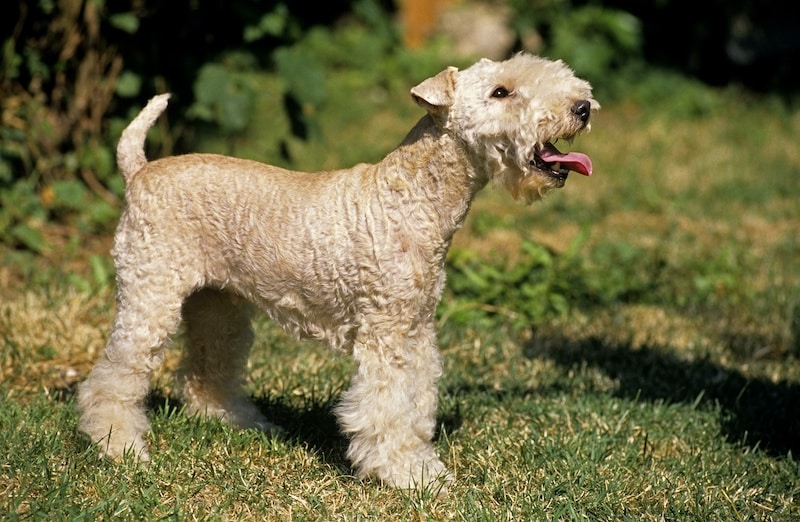
The first of many Terriers on this list is the Lakeland Terrier, a mid-sized dog from England. Its curly, fuzzy double-layered coat grows longer around its paws as well as on its head between its eyes.
That coat texture is why the Lakeland Terrier is a low shedder. You will have to hand-strip this dog, which requires pulling its dead fur by hand. Trimming around its face can also be a challenge. Still, a groomer can help you upkeep the Lakeland Terrier’s breed standards.
2. Brussels Griffon Dog

Do you want a teeny-tiny fluffy lap dog? Look no further than the Brussels Griffon Dog. Weighing 10 pounds or less on average, this small dog from Belgium sheds little fur all year long.
The Brussels Griffon Dog has two sub-types, the Petit Brabancon and the wiry-coated Brussels Griffon. The latter requires brushing with a pin brush while you can groom the Petit Brabancon using a rubber brush or a hound’s glove. Brush your dog weekly!
3. Affenpinscher
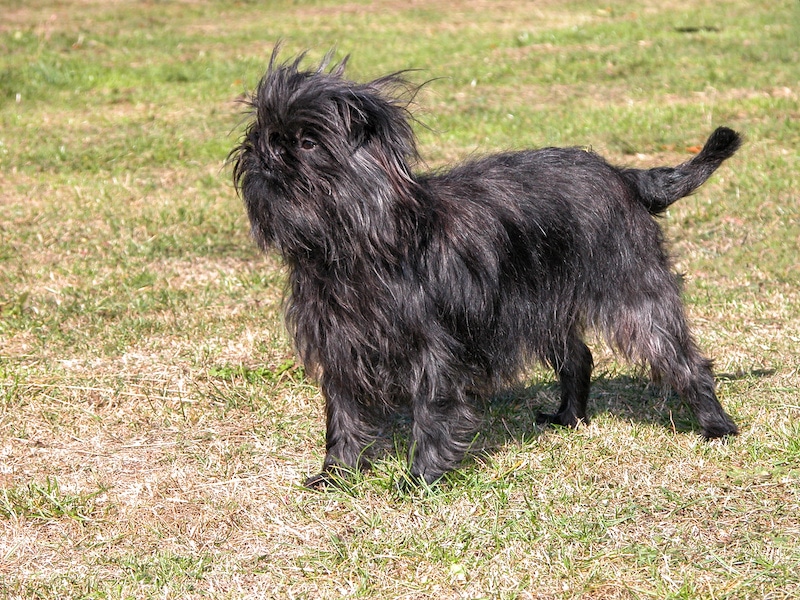
The Wookie-like appearance of the Affenpinscher makes it the perfect cuddly, fuzzy companion. This is another small dog, this time from Germany. Its coat is short and wiry, an excellent combination for a low-shedding breed.
This funny, bold dog requires brushing about twice weekly. During seasonal shedding periods, increase the rate of brushing using a slicker brush. You don’t even need to trim the Affenpinscher’s coat all that often, only when it gets unruly.
4. Cairn Terrier

The second Terrier on this list is the Cairn Terrier, an adorable, tiny dog from Scotland. Although the Cairn Terrier is double-coated, its outer coat is wiry enough that shedding is not a big deal. Expect only moderate shedding during seasonal shifts twice a year.
The Cairn Terrier’s coat requires upkeep through weekly brushing with a metal comb or slicker brush. This is another breed whose fur you can hand strip. Although it’s a time-consuming job, the result is a beautiful color and texture to the Cairn Terrier’s fur.
Recommended: Go here to see our top-rated dog hair blow dryers
5. Maltese

Sweet, unassuming, and oh so fluffy, the Maltese could become your new four-legged best friend. Not only is this breed an infrequent shedder, but it’s considered one of the lowest-shedding dogs around.
This comes with a tradeoff: more time spent on grooming. The Maltese can grow fur that trails to the floor without regular trimming. You’ll also have to brush the Maltese’s luxurious hair daily to prevent painful tangles and mats.
6. Norwich Terrier
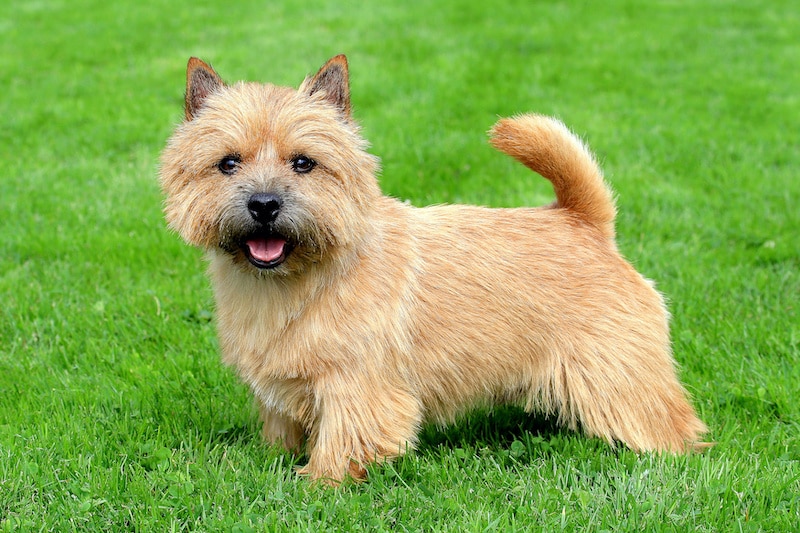
Looking like a close cousin of the Cairn Terrier is the Norwich Terrier, another fluffy, somewhat small dog, this time from England. With its bold, spunky personality and low-shedding coat, the Norwich Terrier is a beautiful dog.
Some Norwich Terrier owners let their dog’s coat grow wild. Many more will trim the fur using clippers or dog grooming scissors. Others still will hand strip the coat; all three options work well. Don’t forget to brush this dog’s coat at least once weekly as well.
7. Bichon Frise

Few dogs are fluffier than the Bichon Frise. Declared a very low shedder right up there with the Maltese, the Bichon Frise has a happy, vivid personality that makes this dog a favorite.
The outer layer of the Bichon Frise’s double coat can tangle and get matted easily without your intervention. Then the hair gets caught in the dog’s undercoat, becoming an even bigger mess. Brush your dog just about every day and be ready to trim the Bichon Frise’s coat once every two or three months.
8. Scottish Terrier

With its large cranium and curly, scraggly hair, the Scottish Terrier certainly has a look that turns heads. Fortunately, that hair doesn’t shed in large quantities, which makes the Scottie a hypoallergenic breed.
Scotties can be fairly difficult to groom, though. Their coats require regular clipping and some hand stripping for good measure. To better control the moderate quantities of loose fur the Scottish Terrier can shed, brush your dog a few times per week with a metal comb or a slicker brush.
9. Poodle

A beloved dog breed through and through, the Poodle has captivated so many since it’s a low-shedding canine. That’s due in part to this dog’s single coat as well as its slower hair growth.
Show poodles can be trimmed in several ways, including the English saddle clip and the puppy clip styles. For the everyday Poodle, clipping or trimming regularly will keep your dog tidy. You’ll have to follow that up with brushing, as the fluffy texture of the Poodle’s coat can get matted without maintenance.
10. Portuguese Water Dog

The ginormous Portuguese Water Dog does not shed enormous amounts of hair as you might assume at first glance. Porties are single-coated dogs with hair that grows at a slower rate, which makes it low-shedding. However, this breed can shed heavily if it’s not eating a healthy diet or if the dog is under stress or infested with fleas.
Your Portie might have one of two kinds of coats. The curly coat is compact, while the wavy one is looser. You can trim either type of coat into a retriever cut (by closely shaving the body) or a lion cut (by shaving the tail, muzzle, and hindquarters). For the unshaved portions of fur, use a slicker brush a few times per week.
11. Tibetan Mastiff
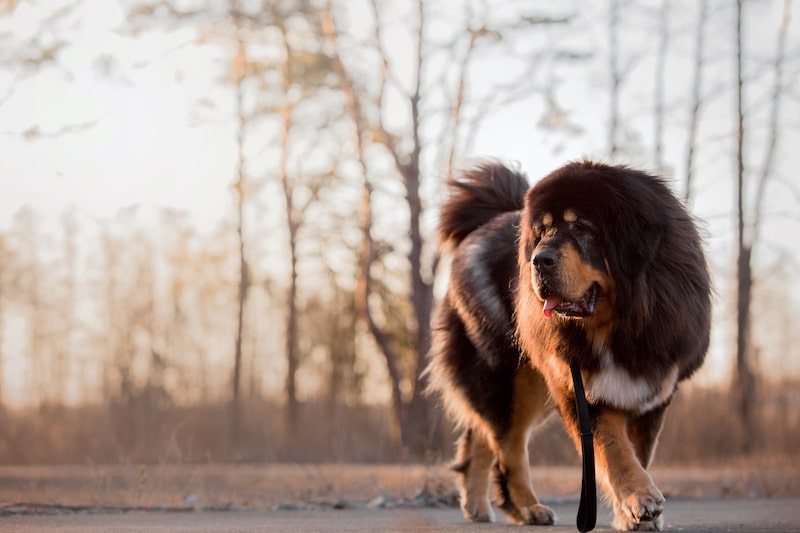
From one large dog to another, the Tibetan Mastiff might be double-coated, but the reason it doesn’t shed is due to both the wooly undercoat and the coarse outer coat. Woolen, textured coats are lower shedding, so Tibetan Mastiffs will shed seasonally only to a small degree.
Even better is that grooming your Tibetan Mastiff isn’t overly challenging. Once, maybe twice a week, brush yours with a pin brush or a slicker brush. More frequent brushing will control this dog’s loose hair better.
12. Irish Water Spaniel

The curly, fuzzy Irish Water Spaniel is a natural fit for this list. Despite the long, flowing locks on its head, this dog sheds minimally because of its coat texture. In addition, the Irish Water Spaniel is among a few dog breeds that are considered hypoallergenic.
It takes more time to brush this Irish dog due to its double coat, but brushing is necessary to prevent knots and mats. Once every two months, trim your Irish Water Spaniel’s fur, which can also control tangling.
13. Norfolk Terrier
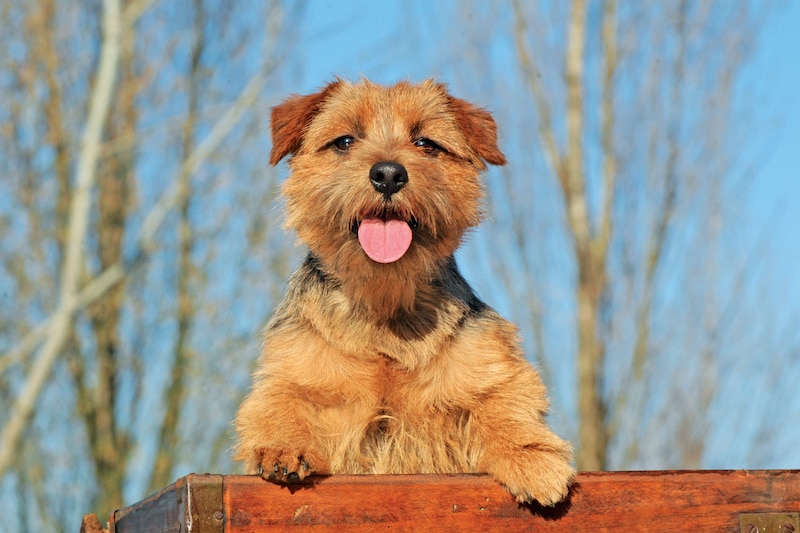
Cute and fluffy in the same vein as the Cairn Terrier and the Norwich Terrier, the Norfolk Terrier (also from England) stands out from the Norwich Terrier because of its ears. This breed has folded ears while the Norwich Terrier’s ears stand up. Both breeds are infrequent shedders, though!
The personable, loving Norfolk Terrier requires brushing one or more times per week with a standard slicker brush. I recommend a slicker brush because its duties are twofold. First, the brush can detangle and remove mats while also pulling out loose fur. Second, Norfolk Terriers benefit from hand stripping from time to time too.
14. Bolognese Dog

The squeezable, affable Bolognese Dog hails from Italy. Bolos’ fur can get long and unruly if you let it, but even still, this dog is not a heavy shedder. As their hair cycle finishes, some fur will shed, but you won’t have to deal with any seasonal shedding in the Bolognese Dog. It’s single-coated.
Like many fluffy dogs, the Bolo’s coat will get tangled and matted if you don’t take care of it. Brush your Bolognese Dog every day or close to it, using a pin brush for the job. When your Bolo plays a lot, bathe them after. Their white coat makes dirt and debris quite obvious!
15. Shih-Tzu

The Chinese toy breed known as the Shih-Tzu is a cuddly companion that loves its people time. Whether you allow your dog’s hair to grow long and luxurious or keep it cropped, the Shih-Tzu remains fluffy. Their shedding is also very controllable.
Where owning a Shih-Tzu becomes high-maintenance is tending to its coat. You have to brush this dog every other day (or every day if you can) to remove its loose fur. Use a slicker brush or a pin brush. Some dog owners finish with a comb brush to spread the fur’s natural oils to help combat dry skin and thus prevent shedding.
16. Soft-Coated Wheaten Terrier
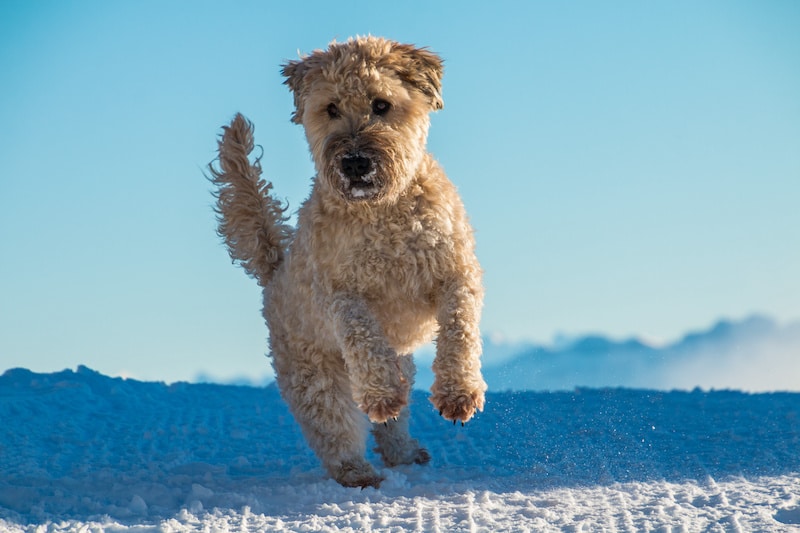
It’s hard to look at a Soft-Coated Wheaten Terrier and not want to pet one, and I can’t blame you! This dog breed is single-coated to avoid seasonal shedding. Its hair also grows and falls out slower, so there’s less of it to clean up.
Trimming will keep your Soft-Coated Wheaten Terrier tidy. Although this breed has two coat styles, thick for the American Wheaten and wavy for the Irish Wheaten, a slicker brush or pin brush suffices for grooming. You’ll control loose hair and detangle your Wheaten’s fur too!
17. Tibetan Terrier

The Tibetan Mastiff and Tibetan Terrier have more in common than their homeland. They also shed little. The Tibetan Terrier, though, is a very different dog. He’s smaller and with longer, shaggier hair. This breed is double-coated.
Grooming your Tibetan Terrier will be a lot easier with the right tools, such as a slicker brush for getting rid of mats and a pin brush for brushing deep into your dog’s coat. Bathe the Tibetan Terrier monthly as well.
18. Black Russian Terrier
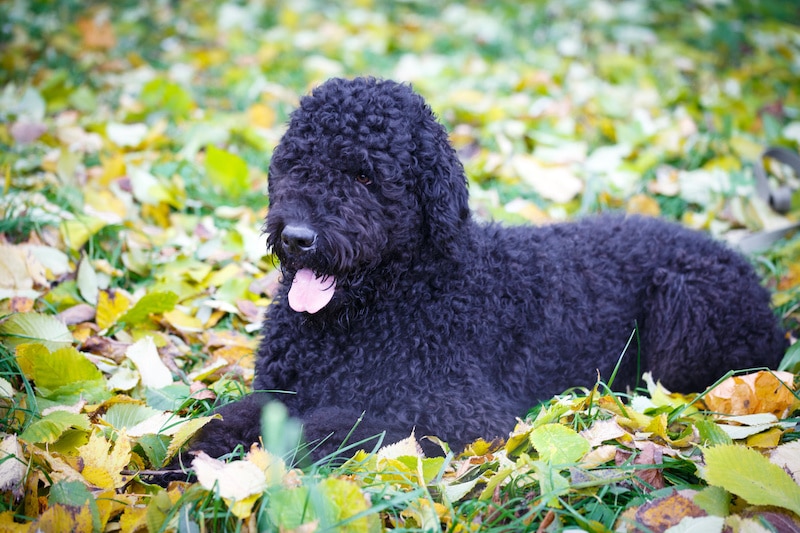
The beautiful Black Russian Terrier rounds out this list. Although its dense double coat doesn’t sound conducive to minimal shedding, its black fur really only comes out during seasonal shedding periods.
By brushing the Black Russian Terrier at least three times per week, you can minimize its low rate of shedding even further. For tangles in this dog’s fur, use a slicker brush. Then, with dog grooming scissors, cut around the Black Russian Terrier’s face so the dog can see. You’ll need to repeat this at least every two months.
Bottom Line
Low-shedding, fluffy dogs might sound like an oxymoron, but plenty of breeds in all shapes and sizes prove that you can have your cake and eat it too.
These breeds usually demand far more upkeep when it comes to grooming. I recommend making time in your routine for maintaining your dog’s fur, be that through brushing, trimming, bathing, or all three. You’ll have a happier, more hygienic dog for your efforts!
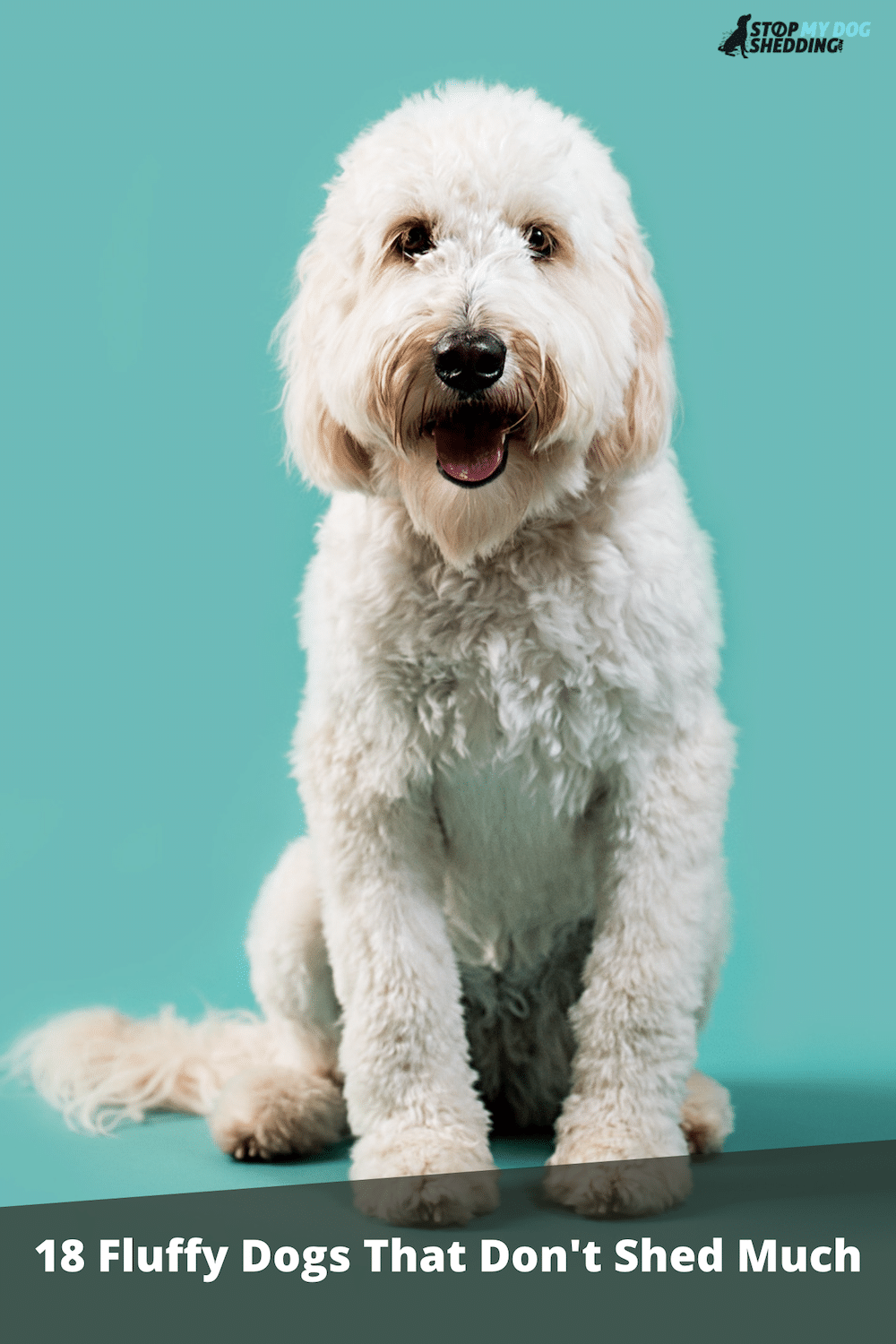

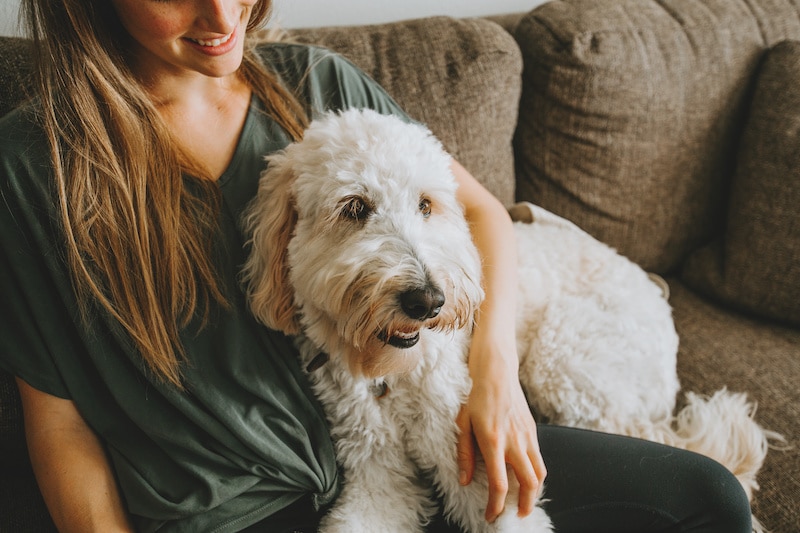










Please note: By submitting a comment using the above comment form, you confirm that you agree with the storage and handling of your data by this site as detailed in our Privacy Policy.